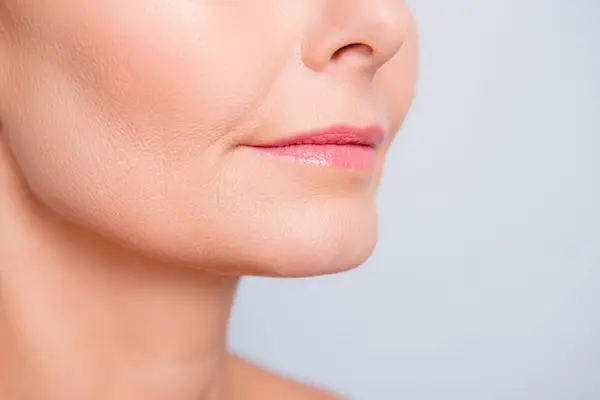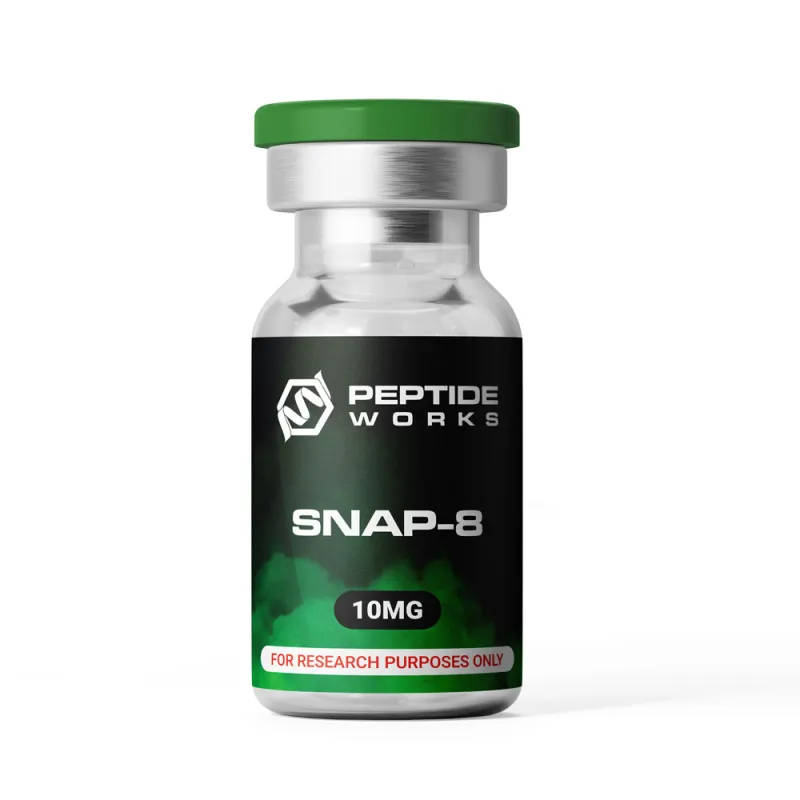
PROMO!
First order? Get 10% OFF with this code: 1storder
Written by

Aging affects every part of the body, but the skin often shows the earliest signs. Fine lines, reduced elasticity, and uneven texture are some of the most common concerns. Scientists are looking at anti-aging peptides, which are short chains of amino acids, as one of the most promising areas of research to address these changes.
In studies, peptides appear to act as signal peptides, sending messages that may boost collagen production, encourage tissue repair, and improve skin barrier function. Researchers are also exploring their potential role in supporting hydration, firmness, and overall skin health.
Because peptides target processes linked with visible aging, they have become a growing focus in longevity science, cellular health research, and cosmetic innovation studies. This makes them one of the most discussed topics in the field of anti-aging research today.
To understand why they attract so much attention, it helps to begin with their role in collagen.
Explore GHK-Cu from Peptide Works, a copper-binding peptide studied for collagen renewal, antioxidant support, and improvements in skin firmness and elasticity.

Anti-aging peptides can boost collagen synthesis by signaling skin fibroblasts to stay active. Research shows that certain types of peptides help these cells create more type I and type III collagen, the proteins that keep skin smooth and firm. They also slow the action of enzymes like collagenase and MMPs that break down collagen over time. This dual action helps skin hold its structure while supporting elasticity and hydration.
Scientists also note that short, low-weight peptides may penetrate skin more easily than larger molecules, potentially delivering amino acids like glycine and proline that are used in collagen synthesis. However, actual penetration depends on the formulation and delivery system. Vitro studies suggest that combining peptides with antioxidants further enhances this process, supporting stronger and healthier-looking skin over time.
Since not all peptides act the same way, researchers have identified several that stand out for their specific actions.
Research highlights several peptides that have drawn interest in anti-aging studies. Each one shows different biological actions explored in laboratories and preclinical models:
Most findings come from laboratory and preclinical studies. These peptides remain research tools, and further investigation is needed to clarify their role in skin biology and aging.
Among these anti-aging peptides, some have garnered more attention for their potential benefits on the skin, such as enhancing firmness and texture.
Discover PTD-DBM from Peptide Works, a synthetic peptide researched for its activation of Wnt/β-catenin signaling to support fibroblast activity and structural protein synthesis.

Research on GHK-Cu shows that this peptide may support the skin’s barrier by stimulating fibroblasts and encouraging new collagen formation. These effects strengthen the extracellular matrix, the structure that helps skin stay tight and resilient. Some studies also suggest increases in dermal density, which contribute to smoother, more youthful appearance.
Within the field of anti-aging peptides, GHK-Cu is frequently examined for its role in improving texture and elasticity. By balancing enzymes that break down collagen and enhancing skin hydration, it has been linked in research to reductions in roughness and fine lines. While findings remain in the study stage, GHK-Cu continues to stand out in peptide science.
While GHK-Cu focuses on elasticity and texture, another peptide, PTD-DBM, is studied for its potential to strengthen skin structure through a different biological pathway.
Laboratory research shows that PTD-DBM activates the Wnt/β-catenin pathway by blocking CXXC5 interactions. In fibroblast studies, this activation led to higher expression of collagen I, β-catenin, and other proteins linked to extracellular matrix strength. These findings suggest a possible role for PTD-DBM in supporting the structural elements that influence skin firmness.
In preclinical wound repair models, PTD-DBM increased collagen deposition and enhanced fibroblast migration. These outcomes suggest potential relevance to anti-aging research, though most findings are still limited to wound repair and preclinical studies rather than direct wrinkle reduction in humans.
Another peptide, SNAP-8, has gained popularity because of its similarity to Botox and its potential role in reducing expression lines.

SNAP-8 is often marketed as a topical option inspired by Botox. While it targets the same SNARE complex involved in facial tension, research suggests its effects are milder and more gradual compared to injections.
Reports from laboratory and cosmetic studies highlight mild to moderate improvements in wrinkle depth and skin smoothness, though effects appear less dramatic than injections. Some studies also note a temporary tightening sensation and softer fine lines with consistent use. Within the family of anti-aging peptides, SNAP-8 stands out for its Botox-like mechanism but remains a research tool rather than a proven replacement.
Because each of these anti-aging peptides works differently, comparing them side by side shows how their benefits and drawbacks align.
Shop SNAP-8 from Peptide Works, a cosmetic peptide examined for its Botox-like mechanism that may help soften expression lines and reduce wrinkle depth.
When researchers look for the best peptides for wrinkles, three names often stand out: GHK-Cu, PTD-DBM, and SNAP-8. Each belongs to the group of anti-aging peptides, yet they act in very different ways. GHK-Cu supports collagen renewal and skin repair, PTD-DBM strengthens structural proteins through Wnt/β-catenin signaling, and SNAP-8 helps soften expression lines with a Botox-like effect.
This anti-aging peptides comparison makes it easier to see how they differ in boosting skin firmness, elasticity, and texture, while also noting potential side effects. Below is a simple breakdown of their benefits and drawbacks side by side.
| Peptide | Benefits | Side Effects |
|---|---|---|
| GHK-Cu | Stimulates collagen production, improves skin elasticity, supports wound healing, balances oxidative stress | Some reports suggest that overuse of copper peptides may cause temporary irritation or uneven skin tone, though clinical evidence on this is limited. |
| PTD-DBM | Activates Wnt/β-catenin pathway, boosts fibroblast activity, promotes extracellular matrix strength | Limited safety data; mild irritation noted in lab models |
| SNAP-8 | Relaxes facial muscles by targeting the SNARE complex, reduces expression lines, softens wrinkle depth | Short-lived results; occasional redness, allergic reactions, or stinging depending on skin types. |
Understanding how these anti-aging peptides compare helps highlight their potential while showing why more research is needed to confirm long-term outcomes and address the effects of aging caused by the natural aging process.
Scientists continue to expand research on anti-aging peptides, revealing how compounds like GHK-Cu, PTD-DBM, and SNAP-8 may boost collagen renewal, strengthen the extracellular matrix, and reduce wrinkle depth. These studies highlight the growing role of peptides in supporting skin firmness, elasticity, and overall vitality, making them one of the most exciting areas in peptide science today.
At Peptide Works, we support this progress by providing high-quality peptides for research worldwide. We believe future discoveries will bring new insights that enhance skin texture, resilience, and longevity, offering hope for innovative strategies to keep skin looking strong, smooth, and youthful for longer.
All products discussed are supplied for research purposes only and are not intended for human use.
[1] Pickart L, Margolina A. Regenerative and Protective Actions of the GHK-Cu Peptide in the Light of the New Gene Data. Int J Mol Sci. 2018 Jul 7;19(7):1987.
[2] Chen Y, Ding X, Ma Z, Shao S, et al. CXXC5 function blockade promotes diabetic wound healing through stimulating fibroblast and vascular endothelial cell activation. Cell Commun Signal. 2025 Feb 25;23(1):108.
[3] Lee SH, Kim MY, Kim HY, Lee YM, et al. The Dishevelled-binding protein CXXC5 negatively regulates cutaneous wound healing. J Exp Med. 2015 Jun 29;212(7):1061-80.
[4] Errante F, Ledwoń P, Latajka R, Rovero P, Papini AM. Cosmeceutical Peptides in the Framework of Sustainable Wellness Economy. Front Chem. 2020 Oct 30;8:572923.
ALL CONTENT AND PRODUCT INFORMATION AVAILABLE ON THIS WEBSITE IS FOR EDUCATIONAL PURPOSES ONLY.
DISCLAIMER: These products are intended solely as a research chemical only. This classification allows for their use only for research development and laboratory studies. The information available on our Peptide Works website: https://peptide-works.com/ is provided for educational purposes only. These products are not for human or animal use or consumption in any manner. Handling of these products should be limited to suitably qualified professionals. They are not to be classified as a drug, food, cosmetic, or medicinal product and must not be mislabelled or used as such.
Peptide Works
Related Articles

How effective could Orexin Addiction Therapy be?
Have you ever wondered why some people find it so hard to stop addictive habits, even when they truly want

Can NAD Therapy Improve Cognitive Performance?
NAD Therapy is gaining attention in research for its possible role in brain health. NAD+ (nicotinamide adenine dinucleotide) is a

Enhancing Energy with NAD+ Supplements
Energy is the driving force behind focus, movement, and recovery. When cells have less energy to work with, the body